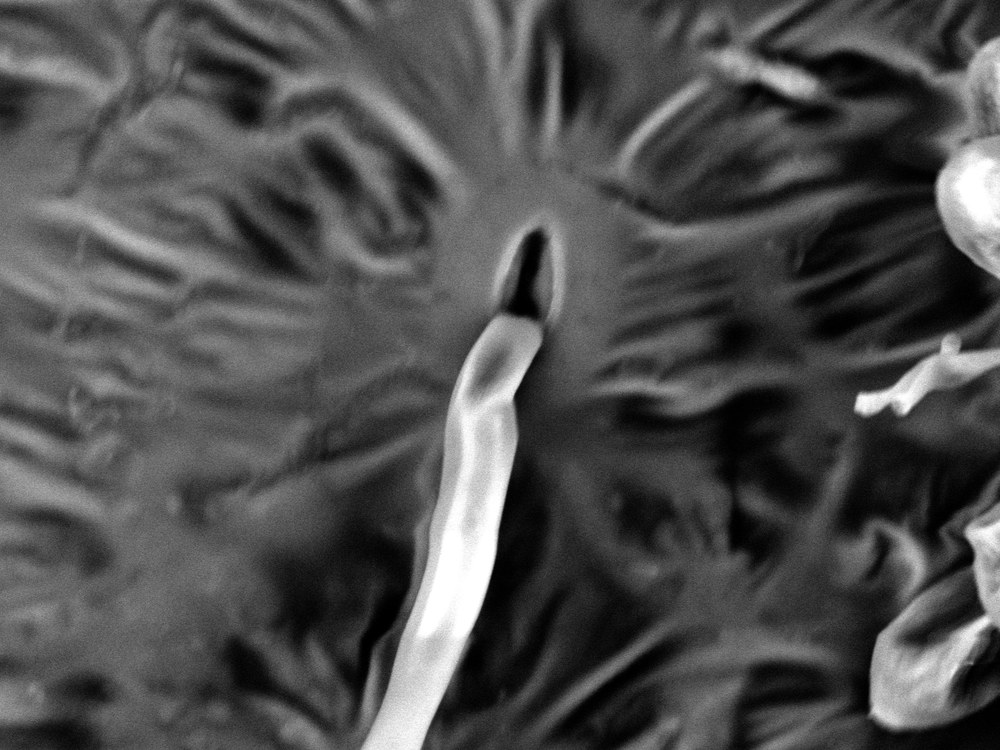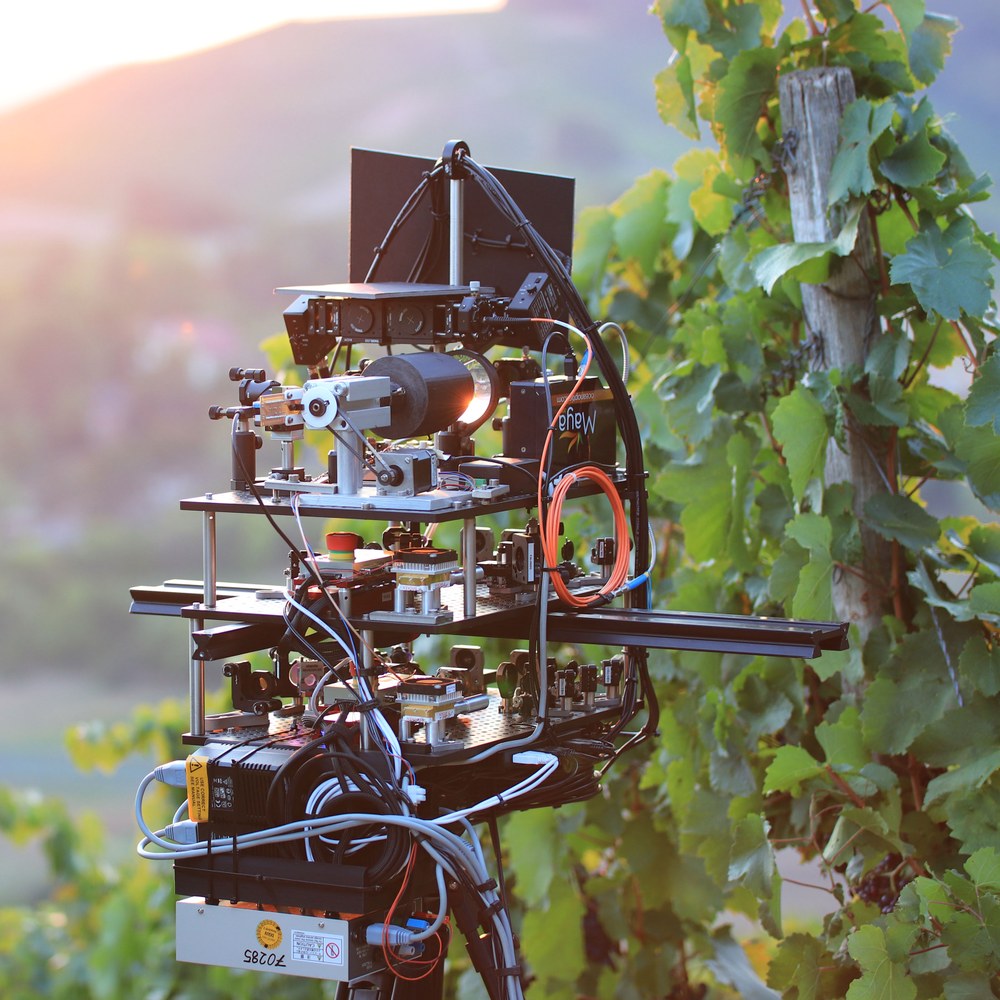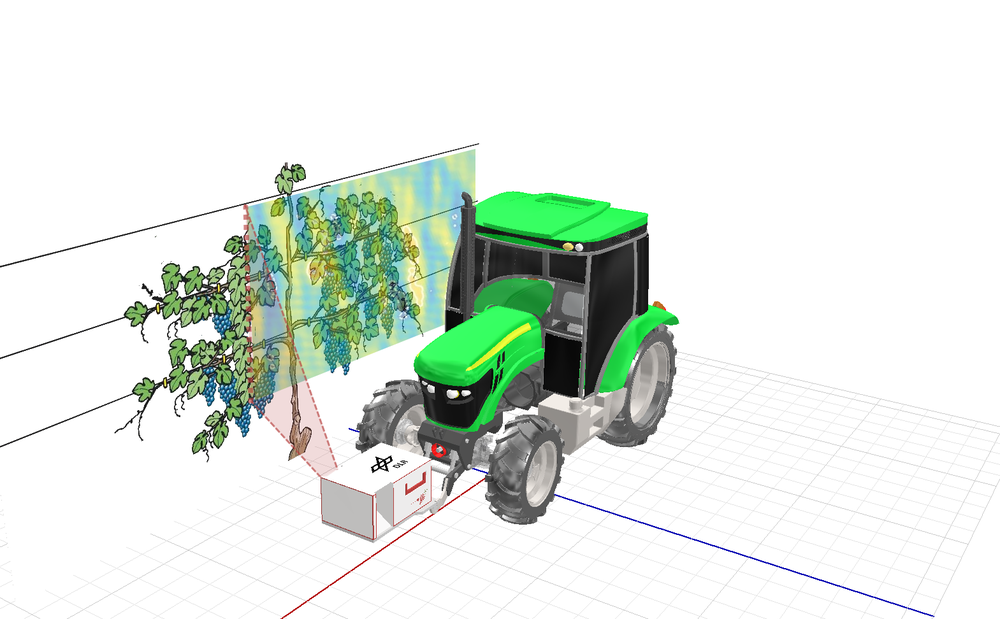Finding fungi

Fungal pathogens in viticulture are a major challenge for wine-growers. In addition to the laborious task of picking out the affected vines during the grape harvest, it can impact the quality of the wine and the grower’s financial return. To address this, researchers at the DLR Institute of Technical Physics in Lampoldshausen have developed the vinoLAS detection system, a small box that can detect fungal infestation at an early stage.

The effects of climate change have increased significantly in recent years. In addition to the wider dangers posed by extreme weather conditions, an increase in heavy rain in summer can create favourable conditions for infestations of harmful fungi in vineyards. Traditionally, wine-growers have used large quantities of fungicides to combat these fungi and avoid major financial losses. One of their primary enemy is downy mildew. When this pest attacks the vine, it results in limp, brown clumps where there should be plump, green fruit. "If fungal pathogens are detected at an early stage, we can take countermeasures to limit the spread locally," explains vinoLAS Project Lead Christoph Kölbl. "This reduces the use of fungicides and the associated cost, protects the environment and ultimately increases the quality of the wine. Our new system is designed to detect and classify fungal infestations as early as possible, without having contact with the plant and over a large area of the vine's leaf surface."
Detecting fungal pathogens with laser-induced fluorescence

The team of researchers uses fluorescence detection for this. A specially optimised laser system emits light with a wavelength in the ultraviolet and visible spectral ranges. When these beams hit the vines, the molecules of both the plants and the fungi are excited and emit so-called fluorescent light. This fluorescent light cannot be seen by the human eye. The vinoLAS system has two spectrometers specially designed to detect this fluorescent light, which the researchers then use to analyse the spectrum of the emitted light.
Characteristic patterns in the spectrum indicate that the plant or part of the plant is infected by a fungus. The researchers first tested this system in the laboratory using potted vines of the Müller-Thurgau and Riesling varieties, which they infected with downy mildew. Using the emission spectra, they were able to identify the fungal infestation on the plants and monitor the changes in the plant structure over a period of several weeks. These tests demonstrated that the system is capable of detecting fungal infestation no later than eight days after the plant comes into contact with the pathogen.
The researchers are currently working on shortening this period to enable even more reliable early detection. Thanks to its active laser illumination, vinoLAS can be used regardless of weather conditions and daylight, including after dusk.

Monitoring large areas of cultivation in vineyards
The vinoLAS team is currently testing the monitoring system at a dedicated test vineyard near Heilbronn. In doing so, they always keep the requirements of the vintners in mind. Although there is still work to be done, both the wine-growers and their industrial partners have already expressed an interest in the system, as there is nothing else like it on the market. "Our work is practical and makes an important contribution towards integrated crop management, best practice approaches and environmental protection. The proximity of DLR Lampoldshausen to the historical wine region of Württemberg means that regional vintners and cooperatives will be able to benefit more from the monitoring system in the future," says Kölbl.

The DLR team will start by installing their system on a narrow vineyard tractor, so that viticultural tasks and fungal infestation monitoring can be carried out in parallel. As it travels through the vineyard, the system systematically measures large areas of foliage without touching the plants. The latest data are transmitted to the wine-growers immediately, allowing them to localise any infestation right away. They can respond by cutting back the affected areas or treating them with fungicides as quickly as possible. "A later application involving drones is envisaged for use on steep slopes. But the ground-based system covers the greatest need," says Kölbl, who works at the Department of Atmospheric Propagation and Effect at the DLR Institute of Technical Physics. This is something of a passion project for Kölbl, who originally comes from the region of Allgäu, which is famous for its livestock farming, and is excited to work with the vineyards around Heilbronn. "I have always loved looking for alternative applications, which is how we progressed from our research on bacteria to the topic of fungal pathogens in vineyards. I believe it is important to consider transfer from research to application right from the start of a project."
DLR team work towards market launch
Looking ahead, the researchers plan to carry out further measurement campaigns in the vineyards under real conditions. The vinoLAS system will be tested on other grape varieties and use the results to improve their analysis models. The team is also in close contact with companies developing sensor systems in the agricultural sector, specialising in digital data modelling for agriculture, focusing on spraying applications or producing plant protection products, and wine-growers and cooperatives. The positive response they have received makes Kölbl and his team confident that vinoLAS could soon see active use in real vineyards.
An article by Verena Müller from the DLRmagazine 172
